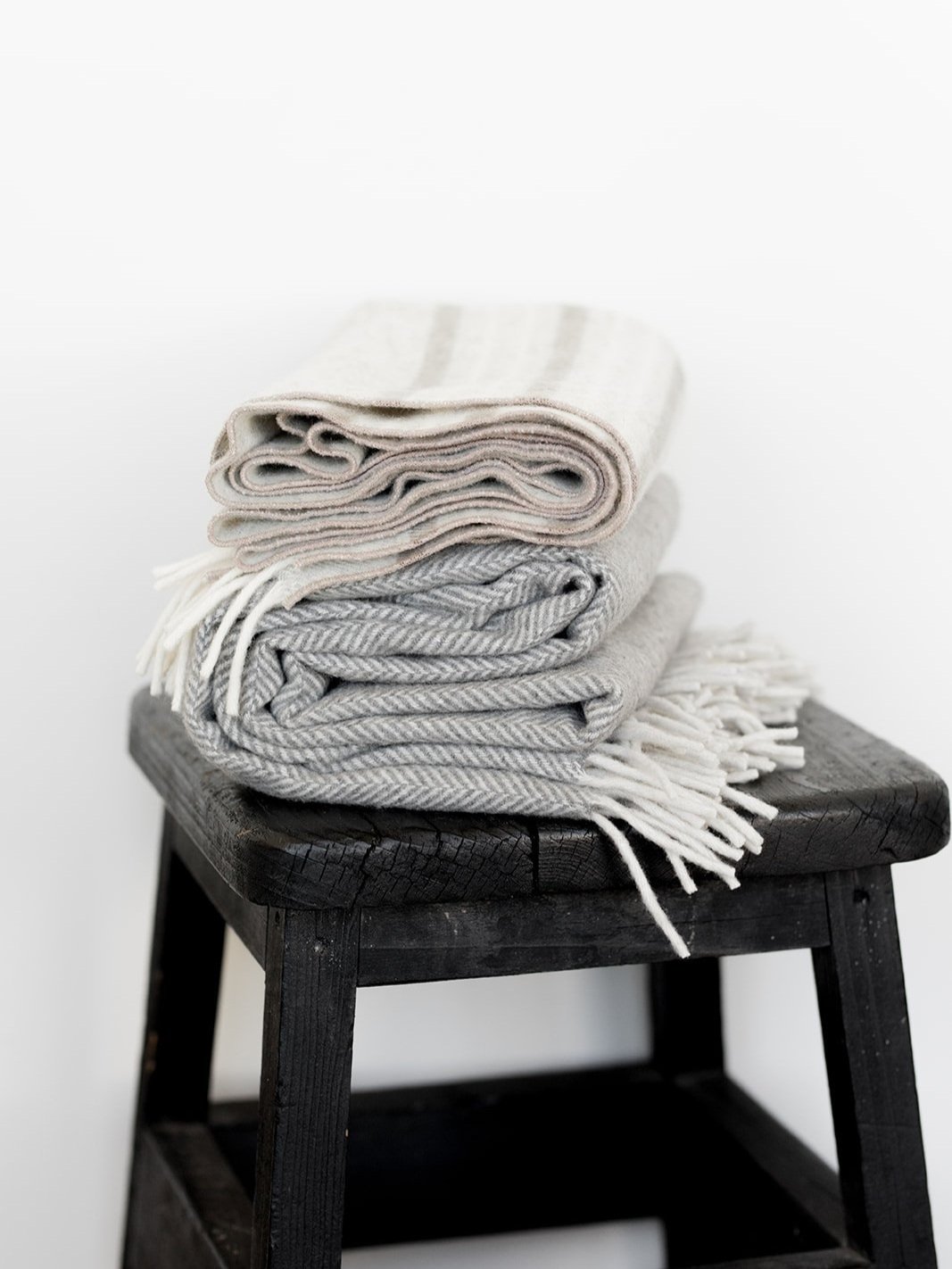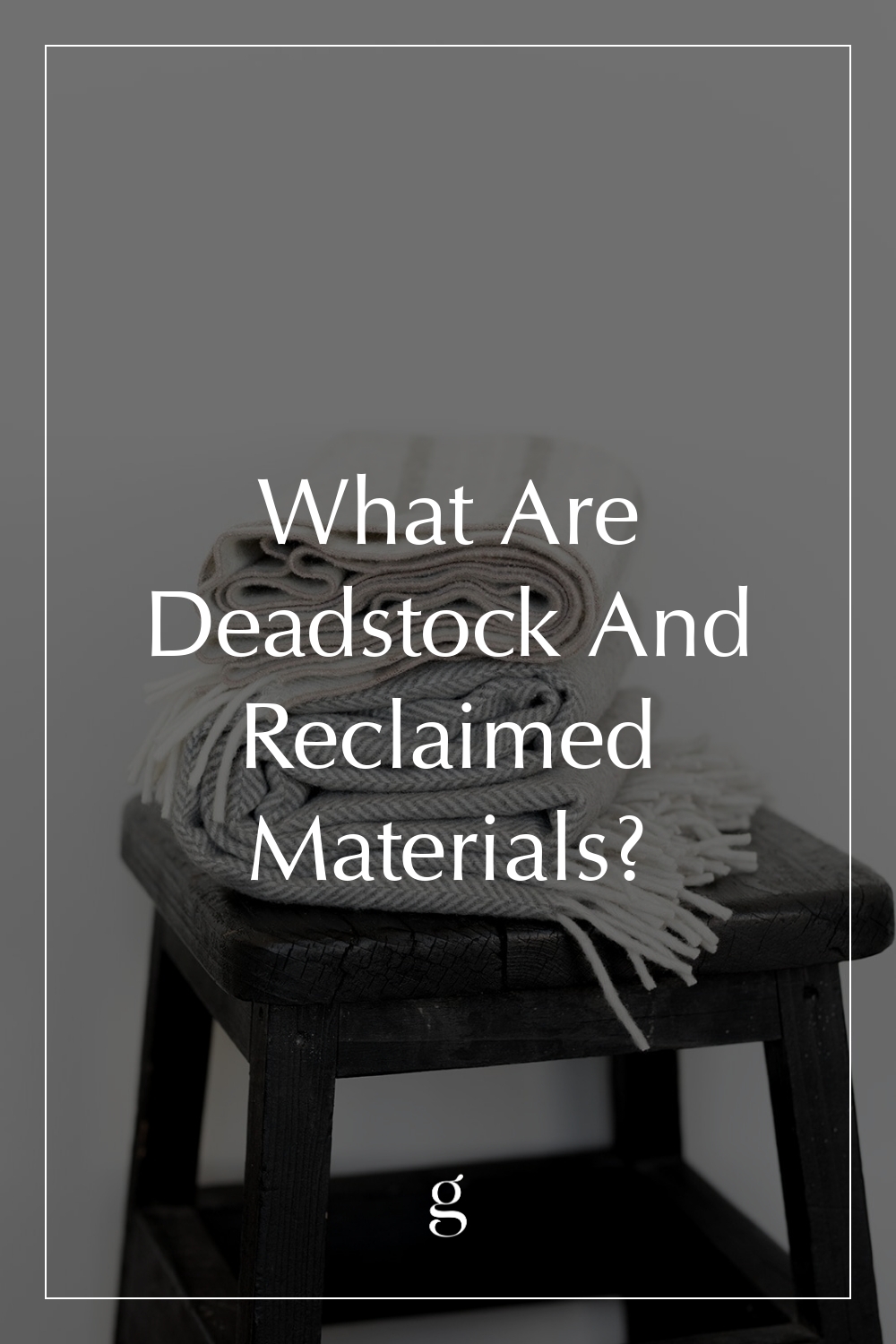
What Are Deadstock And Reclaimed Materials?
Fashion has a waste problem.
We’ve known this for a while. In 2018, Burberry came under fire for burning $37 million worth of unsold inventory, revealing a practice rampant in the fashion industry. Brands overproduce so that they always have clothing to sell. And even before fabrics are turned into clothes, garment brands purchase more than they need, creating what’s called deadstock material.
Deadstock materials are the surplus fabrics from factories and mills that are discarded because brands no longer need them or because they don’t meet quality standards. Attempting to combat this wasteful cycle, smaller and ethical apparel companies will purchase deadstock materials to make new garments. While deadstock isn’t inherently sustainable, the process of diverting waste from landfills—at least for a while—is a more environmentally conscious and sustainable approach.
On the other end, some brands have no reason to purchase deadstock fabrics, rather they use their own deadstock from past seasons to create new products. One example is ethical clothing brand Rujuta Sheth who takes a zero waste approach to excess fabric. They take scrap fabric from their production in addition to any unused textiles from their past seasons to craft new products, like home goods, where possible.“Deadstock materials are the surplus fabrics from factories and mills that are discarded because brands no longer need them or because they don’t meet quality standards.”
But as interest in deadstock materials grows, factories and mills have an incentive to produce more than they need. Supply continues to supersede demand, resulting in heaps of deadstock being sold worldwide. Is this truly a creative solution to an overwhelming problem?
Designing With Waste
Definitions vary when it comes to deadstock, and of the industry experts I interviewed, everyone had a slightly different version. Yet, how these materials are acquired generally pans out the same.
To start with, fashion companies might give inconsistent projections to factories and mills. “The factories often have to overcompensate for that by over-ordering and having an excessive amount of fabric,” explains Rachel Faller, Co-Creator of zero-waste brand Tonlé. In many cases, factories aren’t legally allowed to sell this fabric off, but big brands tend to ignore the issue, wanting nothing to do with their own waste.
Jobbers (the distributors of deadstock fabrics) end up collecting and sorting leftover materials from these factories. The deadstock materials are then sold at markets or individual stores (such as Ragfinders in Downtown LA). The price generally depends on quality.
“In many cases, factories aren’t legally allowed to sell this fabric off, but big brands tend to ignore the issue, wanting nothing to do with their own waste.”
For example, an untouched roll of fabric will cost more, whereas pieces of warped material will be discounted. “A lot of these up-and-coming designers and small brands don’t have access to fabric, like larger corporations. So [deadstock markets] give them the opportunity to get fabrics that they couldn’t have,” says Rachel Temko, Founder of Whimsy and Row.
Deadstock can be beneficial to small brands and emerging designers. It’s especially useful when experimenting with exclusive collections. Small production runs allow brands to collect vital customer feedback before investing in new styles. In this way, deadstock provides a low-risk creative environment for designers.
Brands using deadstock most often care about curbing fashion’s waste, though utilizing this excess fabric can only do so much to lower the industry’s environmental impact. Combating the problem at hand takes more work than using material that was overproduced in the first place.
Working With Limitations
However, deadstock comes with its limitations. Most jobbers won’t hold fabrics for long, which puts brands in a bind if they want to test out materials before they buy larger amounts. This leaves small fashion businesses with little guarantee that the fabric will work for their designs.
“As small brands don’t want to sell their customers defective garments, they often have to do their own quality checks after making the purchase.”
Deadstock materials can also come with defects, ranging from small holes on one part of the fabric to the entire material containing toxic chemicals.
“You just never quite know whether the labels are right or not,” says Hanna Guy, Founder of Cambodia-based Dorsu. The company does its own burn testing, shrink testing, and wash testing. Tonlé, which also produces in Cambodia, even alters the fabric, almost upcycling it into new material for their one-of-a-kind garments.
But sometimes, the deadstock fabrics just won’t work. And while small brands will often do their best to “get crafty” with these fabrics, they’re forced to resell newly acquired materials on secondhand platforms or even back to the jobbers.
“Every roll may have slight variations; a brand may never be able to find an exact fabric again… [they] may be stuck with a customer favorite they can’t recreate.”
Another downside with deadstock is that every roll may have slight variations; a brand may never be able to find an exact fabric again. “It can be tricky because you can’t tell your customer exactly how it’s going to fit or drape if the fabric is different, like a slight variation,” Baror-Padilla explains. After sourcing, testing, and producing, brands may still be stuck with a customer favorite they can’t recreate.
Small Solutions to a Big Problem
It’s admirable for small brands to commit their efforts towards diverting waste from landfills, but deadstock remains a temporary solution to a much larger and complex problem. According to the EPA, 10 million tons of textile waste ends up in the landfill each year. Putting the onus on small brands to clean up the entire fashion industry isn’t only unfair but ineffective.
“We are cleaning up this waste because it needs to happen. Otherwise, it’s going to be burned and dumped,” Faller shares. “If my company didn’t have to exist, that would be great.”
No one brand can combat fashion’s waste problem alone, and many designers worry buying deadstock only enables big fashion players to continue creating waste. For this reason, Faller points to FABSCRAP as a model giving her hope. The NYC-based recycling nonprofit collects fashion companies’ excess fabrics for a fee. Depending on the type of material, it’s broken down to create insulation, carpet padding, etc., or design students reuse it. An impact report accompanies donations, almost like a report card.
“No one brand can combat fashion’s waste problem alone, and many designers worry buying deadstock only enables big fashion players to continue creating waste.”
“We’re giving them numbers and very clear points on what their impact was by choosing to recycle with us,” explains Camille Tagle, Cofounder of FABSCRAP. “We want the companies who are producing the waste to be held accountable.”
If you’re looking for a new item without the baggage of virgin materials, deadstock may be a great option. But keep in mind that reclaimed materials are a temporary solution to a much larger waste problem.
The best thing we can do to curb textile waste as conscious consumers? Reuse and repair what we already own (try these mending tips for holes and adjustments), shop thoughtfully, and opt for secondhand whenever possible. Here’s to hoping there will only be more accountability in the future.
RELATED READING
Audrey Stanton was born and raised in the Bay Area and is currently based in Los Angeles. She works as a freelance writer and content creator with a focus in sustainable fashion. Audrey is deeply passionate about conscious living and hopes to continue to spread awareness of ethical consumption.


